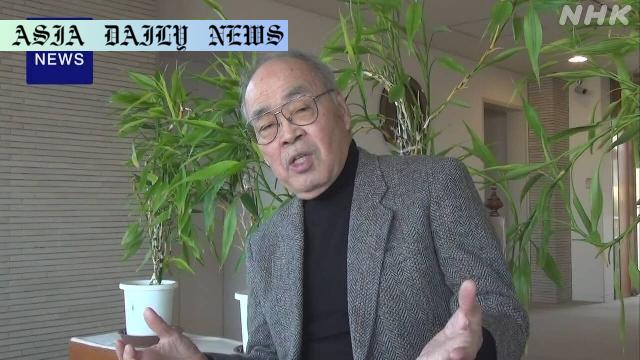Archaeologist: Japanese archaeologist Omura Sachihiro, who led the Kaman-Kalehoyuk excavation in Turkey for 40 years, passes away.
Omura Sachihiro was a renowned archaeologist from Japan.
He led the excavation of the Kaman-Kalehoyuk site in Turkey for 40 years.
Omura discovered evidence of the world’s oldest artificial iron.
He contributed significantly to Turkish archaeology and student training.
He passed away in Turkey after falling ill, leaving behind a profound legacy.

Introduction to Omura Sachihiro’s Journey
Omura Sachihiro, a distinguished Japanese archaeologist, dedicated his life to unearthing the ancient secrets of ironmaking in Turkey. Born in Morioka, northern Japan, Omura pursued higher education at Waseda University before embarking on a life-changing journey to Turkey. For over four decades, he tirelessly worked to uncover the historical significance of the Kaman-Kalehoyuk site, shaping the field of archaeology with his remarkable discoveries and scholarly contributions.
The Discovery of the World’s Oldest Artificial Iron
Omura’s most notable accomplishment was leading the excavation at the Kaman-Kalehoyuk ruins in central Turkey. Beginning in 1985, he spearheaded the project for 40 years, bringing to light invaluable findings. One of the most significant discoveries was pieces of metal believed to date back to the 24th to 22nd centuries B.C. This groundbreaking evidence suggested the presence of the world’s oldest artificial iron, revolutionizing our understanding of ancient ironmaking practices. His work not only advanced archaeologists’ grasp of metallurgical history but also connected Turkey and Japan through a shared appreciation of historical heritage.
Establishment of the Japanese Institute of Anatolian Archaeology
In 1988, Omura played an instrumental role in establishing the Japanese Institute of Anatolian Archaeology near the Kaman-Kalehoyuk site. Under his leadership, the institute became a hub for archaeological research and education. Omura invested in training a new generation of researchers and students, instilling in them a passion for uncovering ancient histories. His efforts extended beyond excavation; he contributed to the establishment of a museum to display artifacts uncovered during the excavations, creating a platform to educate the public about Turkey’s rich archaeological history.
Omura’s Commitment to Scholarship and Collaboration
Omura’s commitment to research went beyond his discoveries. His dedication to scholarship was evident in his efforts to promote collaboration between Japan and Turkey. By serving as the head of the Japanese Institute of Anatolian Archaeology, he fostered cross-cultural dialogue. His recent visit to Tokyo in March to present his findings underscores his lifelong dedication to sharing knowledge and advancing the field of archaeology. His initiatives reinforced the importance of international collaboration in unlocking the mysteries of our shared human past.
Legacy and Final Contributions
Omura’s unexpected death in Turkey marked the end of a transformative era in archaeology. According to reports, he fell ill and passed away at a hospital, leaving a vacuum in the field. However, his contributions will continue to inspire archaeologists and scholars worldwide. His work reminded us of the power of persistence, curiosity, and the harmonization of diverse cultures through a shared appreciation for history. Omura Sachihiro’s discoveries and lifelong commitment left an indelible mark on the world, bridging continents and generations in pursuit of historical understanding.



Commentary
The Inspirational Life of Omura Sachihiro
Omura Sachihiro’s life is a testament to the power of dedication and the pursuit of knowledge. His decision to leave Japan and establish himself in Turkey demonstrates remarkable courage and determination. By committing four decades of his life to the excavation of Kaman-Kalehoyuk, Omura not only uncovered vital historical data but also set a benchmark for future archaeologists. His work inspired countless researchers and students, showing them that persistence and passion can yield extraordinary results.
How Collaborative Efforts Enhance Historical Understanding
One of Omura’s most admirable efforts was his commitment to cross-cultural collaboration. Establishing the Japanese Institute of Anatolian Archaeology in Turkey speaks volumes about his vision for uniting cultures over a shared mission. By training researchers and fostering academic exchanges, Omura ensured that his work extended far beyond mere discoveries. His contributions emphasized the importance of bridging borders in the quest for knowledge—a valuable lesson for global academia today.
The Enduring Impact of Omura’s Discoveries on Archaeology
Omura’s findings not only altered the course of history but provided a fresh perspective on ancient technological advancements. His work on unearthing the world’s oldest artificial iron showcases humanity’s early ingenuity. This discovery had profound implications for our understanding of historical metallurgy and its role in shaping early civilizations. Moreover, his efforts to preserve and promote these artifacts through museum exhibitions ensured that his work reached a wider audience, inspiring future generations to appreciate archaeological treasures.
Why Omura Sachihiro’s Legacy Matters
Omura’s legacy reminds us of the importance of preserving history and understanding the roots of technology and culture. His life serves as a guiding light for aspiring archaeologists, scholars, and educators. In a fast-paced world, his work reminds us to pause and look back—acknowledging the intricate tapestry of human history and the lessons it holds for our future. Omura Sachihiro was more than an archaeologist; he was a visionary whose life’s work connected continents, generations, and ideas, leaving behind an enduring legacy of cultural and academic enrichment.